(Note : This script will be presented as a lecture in the Convention)
Introduction
After the founding of the ‘Hindu Janajagruti Samiti ‘ in 2002 in the next five years, to make Hindus aware of the attacks on their Dharma the Samiti launched various campaigns. This included protests against harm caused to Dharma directly, through memoranda or protests and chanting processions (namdindi) at the district level. These campaigns received a good response from the public. We were wondering what to do to retain the unity of Hindus so gained. After a study we realised that temporary unification of Hindus for a particular cause dwindles once it is accomplished or becomes stagnant. It is not fortified without a new topic or reason. For that Hindus have to be constantly made aware of the injustice done to them all over. Only if this is done then Hindus will unite time and again and get fortified to combat the different kinds of attacks on Dharma. It is with the intention of achieving this that in 2007 we thought of the alternative of organising ‘Hindu Jagruti Sabhas’. Till 2011, that is within a span of 4 years the Samiti managed to convey the message of attacks on the Hindu Dharma to 10,67,883 Hindus through 869 Sabhas in 7 states. In addition the Sabhas prepared Hindus to protect Dharma and also sent a warning to the Government that ‘we are aware and united’. Let us view a CD of one such Dharma Sabha which will given you an idea of the nature of the meeting, though in brief, and then move on to the next point.
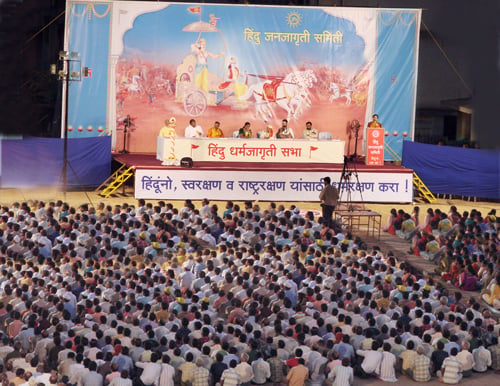
Index
- 1. Show the CD of how the HJS holds a meeting for awakening of Dharma (15 minutes)
- 2. Dharmasabhas organised by Hindu Janajagruti Samiti and the mission which has occurred through them
- 3. Organisation of a Dharmajagruti Sabha
- 4. Desirous of helping the Hindu Janajagruti Samiti !
1. Show the CD of how the HJS holds a meeting for awakening of Dharma (15 minutes)
Just now you saw the CD of the ‘Hindu Dharmajagruti Sabhas’. From that all of you must have got an idea of the overall nature of the Sabha. Some of you must be feeling that the organisation for such a Sabha must be very cumbersome. Of course it is; but in states with hardly any volunteers, 8-10 volunteers with intense motivation have managed to make such Sabhas a grand success. Now let us discuss the unique features of ‘Hindu Jagruti Sabhas’ in comparison with other programmes or its benefits.
2. Dharmasabhas organised by Hindu Janajagruti Samiti
and the mission which has occurred through them
2A. Importance of Hindu Dharmajagruti Sabhas
2A 1. The Sabha is something to look forward to : The propaganda for the Sabha is done through different media in a span of a fortnight to a month. That is why for Hindus from different spheres it is something to look forward to. Consequently the number of Sabhas is increasing.
2A 2.Eliminating misconceptions about the organisation : Even if a person has some misconception about some organisation he attends the Sabha to listen to the guidance of various renowned speakers with eagerness. After attending a Sabha, seeing the mission performed by the organisation not only are his misconceptions eliminated but he becomes aware of the attacks on Dharma and also active in the mission for Hindutva (Hindu cause).
2A 3. Creation of a desire to do something for Dharma and knowing what to do for it, both are learnt by attending a Sabha : Hearing about the calamities on the Hindu Dharma presented at the Sabha, in proactive Hindus an inspiration develops to do something to fight them. If it is possible to participate in the mission then in the ‘response form’ distributed to attendees after the Sabha, they commit their ability to actively participate in any of the activities mentioned in the form.
2A 4. Each and everyone can participate in the mission for Dharma as per his desire, potential and time that he can sacrifice for it : Assistance of different kinds is required from society – like accomodation and meals for volunteers, sponsors for hoardings, vehicles for propaganda, sound system etc. which can be obtained from local proactive Hindus free of cost or with a minimal fee, for the Sabha. This way they too get involved with the Sabha. Considering the benefits of this programme the Hindu Janajagruti Samiti has been organising such Sabhas all year through (except in the monsoons ). Now in brief let us see what we have achieved by organising Sabhas in the last 4 years.
2B. Achievments of the Samiti through the ‘Hindu Dharmajagruti Sabhas’ !
1. Several youths who have participated in the Dharmajagruti Sabhas have overcome their vices.
2. Many do not leave the house without adorning a tilak (dot of vermilion) on their foreheads. By following Dharma gradually they have begun taking up the task of uniting Hindus.
3. Several youths who were a part of the audience in Sabhas have forgotten their quarrels and differences and are now equipped to stop attacks on Dharma.
4. Today through the medium of Dharmajagruti Sabhas all like-minded, pro-Hindu organisations in Maharashtra, Goa and Karnataka have united to a great extent.
5. In particular, after attending a Sabha several proactive Hindus themselves organised Sabhas in their areas. Generally we need to go in search of people with liking for Hindutva but here is an example of how they get attached to the mission without a search, through Dharmajagruti Sabhas.
6. In addition people donate towards the mission of Dharma.
In this way you too in your own sphere can create awareness through a great extent on behalf of your organisation. From that viewpoint in brief let us understand how a Sabha is to be organised and how different decisions in its context are to be taken.
3. Organisation of a Dharmajagruti Sabha
3A. Stages in organisation
3A 1. Decision about type of Sabha (small, medium or large scale)
A Sabha can be organised on a small, medium or large scale. This depends on the local conditions. Rules in this context are given below.
3A 1A. A large Sabha : The ground should be huge and the venue should be centrally located, in the city. 50-75 volunteers should be available. The expected audience should be 2500 and the speakers should be of state level.
3A 1B. A medium Sabha : The ground should be medium or the hall should be large. The Sabha should have 30-40 volunteers. The expected crowd should be 1500 to 2000 and the speakers should of state level or good speakers of the district level.
3A 1C. A small Sabha : A small village ground or hall, a temple compound, can be used for this . 20-30 volunteers are sufficient. The minimum crowd should be from 300 to 1000 and the speaker should be of district level.
Based on the position of the organisation in a particular region the decision about how a Sabha is to be organised is decided. As far as possible start with a small Sabha and then hold a medium one. If both Sabhas receive a good response then organise one on a large scale. In some places if the response to a small Sabha is extremely good then straight away organise a large one the next time.
3A 2. Confirmation of timetable
Around August we begin making the timetable of the Sabhas to be organised after the monsoons. When deciding this we study the functioning of the Samiti in that region and consider holidays.
| Small Sabha | Medium Sabha | Large Sabha | ||
| 1. | Venue | Small village ground or hall temple compound |
Medium ground or large hall |
Large centrally located ground in the city |
| 2. | No of volunteers required |
20-30 | 30-40 | 50-75 |
| 3. | Expected audience |
300-1000 | 1500-2000 | More than 2500 |
| 4. | Speaker | District level | State/district level | State level |
The volunteer in-charge of the region decides on how many Sabhas are to held in his region and the dates and send that to the State level Co-ordinator. If there are Sabhas at other venues on the same day then with discussion with the Co-ordinator they are altered.
3A 3. Tests to decide the venue and dates of the Sabha
A. The venue of the Sabha should be in the centre of a district or city and should have good transport facility.
B. The venue should be clean and the atmosphere should be pleasant.
C. There should be no disturbance of traffic, chaos and noise of crowds.
D. Places of worship of other religions should not be close to the venue.
E. When fixing the date for a Sabha in a small village ensure that it is not the day of the local bazar.
F. When fixing the date of the Sabha ensure that that day there is no large scale programme of a Saint, sect or leader nearby.
G. The date fixed for the Sabha should not coincide with any sensitive day (such as 6th December – Babri demolition day)
H. Ensure that the date of the Sabha does not coincide with a major festival.
3A 4. Who should be chosen as a speaker ?
The speech of a speaker is the soul of a Sabha. If this speech is boring, monotonous and directionless and does not have an impact then belief in the Sabha and the efforts put in it will be washed off. We waste time and money of hundreds of volunteers for propaganda of the Sabha. Proactive Hindus express their solidarity for it by attending it. So a poor speech can reduce the output of the Sabha in comparison with the propaganda, tremendously. Considering this point ensure that the speakers are powerful. You can use the following points when choosing speakers.
A. In how many Sabhas/programmes has the speaker delivered speeches ?
B. Of what calibre is his speech (average/moderate/excellent) ?
C. Are people influenced by his presentation of the topic ?
D. Doe he speak on the given subject with analytical study or haphazardly ?
E. Is his speech so inflammatory that it could pose as an obstacle in further missions ?
If when organising a Sabha in your region you have a dearth of speakers then a speaker of the Hindu Janajagruti Samiti will definitely address your Sabha.
Unless the type of Sabha, its date,venue and speakers are fixed you cannot start propaganda for it because all these points are required in the printed material used in propaganda. Now let us see how propaganda for the Sabha is done.
3A 5. Methods of propaganda for the Dharmajagruti Sabha througn various media
A. In a district with only one Sabha propaganda is done in the entire district and in one with two Sabhas it is divided into two.
B. Planning for propaganda is done after a study of the parts where propaganda is to be done and the available volunteers. As per the planning everyday volunteers do home visits in a particular area and give information about the Sabha with the help of invitations. At that time either a hand bill or a special issue is published and used. During propaganda addresses and contacts numbers of interested people are collected.
C. Leaders of organisations – that is mandals, sansthas and sanghatna met during the period of propaganda are requested to bring together the Hindus in their own territory. Groupwise information about the Sabha is then given to the groups and they are invited to it. Consequently with joint planning they attend the Sabha.
D. Simultaneously a group of volunteers who is incapable of imparting information properly perform the task of gathering advertisements, to procure funds and meet prestigious people to get sponsorship.
E. Wall posters, ‘banners’, ‘hoardings’ are put up 15 days before the Sabha.
F. 8 days prior to the Sabha a rickshaw making announcements, inviting to the Sabha is driven in different parts of the city.
G. Articles to advertise about the Sabha are given in local newspapers.
H. The local cable operater, radio, corner meetings, street plays, press conferences etc. are all used to convey information about the Sabha to the public.
I. Regular propaganda through the medium of blackboard writing is done at important squares on the road, temples, venue of the programme and housing colonies.
J. The invitation can be put up on the notice board in banks, post offices and telephone offices with permission of the concerned authorities.
K. On the eve of the Sabha and on the same day, interested people whom we have met during propaganda , friends of Samiti volunteers, relatives and Hindu acquaintances are reminded about the Sabha through an SMS. In big cities propaganda for a Sabha is also done through a website.
L. If propaganda in some areas is not possible then invitations can be put up on the notice boards of some buildings. These and many more ideas can be used to do propaganda for a Dharma-jagruti Sabha. During propaganda note whether the atmosphere for the Sabha is being created. Now let us see the actual arrangements to be made for a Dharma Sabha.
3A 6. Actual arrangements for a Dharmajagruti Sabha
A. Usually the hall or ground is handed over to us a day or two before the event. It is cleaned and as planned the stage and exhibition hall is created. When doing so the space to be allotted to entry and exit passages, reception counter, response room and garage is decided.
B. A fencing is made with blue cloth all around the ground to give it the appearance of a hall. Small rooms are constructed within it. All these tasks are time-bound and are completed in that time. That is why there is no delay in commencing the Sabha.
C. The small rooms house information and exhibits on the different campaigns of the Samiti. Those interested in a particular subject can get more information on it.
D. Along with this an exhibition educating on Society, Nation and Dharma are set up. Holy texts of the Samiti are also distributed here.
E. The Samiti offers free rooms to like-minded organisation. That is why they develop a closeness for this mission and this helps the unification process.
3B. Nature of the Dharmajagruti Sabha (in brief)
A Sabha begins with lighting of the oil lamp and recitation of Vedic verses. This removes different obstacles which obstruct the success of a Sabha and helps in making the atmosphere pure. Besides it is also a depiction of Hindu Sanskruti (culture). Thereafter proactive Hindus from that region, striving for Hindutva selflessly, are honoured. This gives inspiration to others. This is followed by speeches of dignitaries. Then resolutions made in the interest of the Nation and Dharma are seconded by all in unison and the Sabha is concluded with group singing of ‘Vande Mataram’.
3C. A follow-up meeting with volunteers who wish to become active
A successful Sabha is the first stage of benefit, fruit of the efforts put in by volunteers for a month. In the final stage direct unification of Hindus is the main objective. Often after completion of the Sabha volunteers become lackadaisical. That is why by educating volunteers they are inspired to make efforts for benefits of the final stage, that is establishing a direct contact with the interested and getting them to participate in the mission directly. After listening to the Dharmajagruti Sabha a ‘response card‘ with a list of the different campaigns launched by it in which the person may be interested in participating in the mission towards the Nation and Dharma, are kept. The one interested in a particular campaign enrolls for it. A meeting of the ones enrolled is held within 4-5 days after the Sabha. The place and time of the meeting is announced from the dais on the day of the Sabha. It is also propagated through small pamphlets. Those who have filled the response card are reminded about the date of the meeting. Hence it receives an overwhelming response. If a proactive Hindu attending a meeting is allotted a campaign as per his potential then he becomes very active towards the cause of Hindutva. If we hold meetings of such proactive Hindus superficially then we can strengthen this organisation.
4. Desirous of helping the Hindu Janajagruti Samiti !
By now you must be well acquainted with the Dharma Jagruti Sabha and its various facets. At present looking at the different kinds of attacks on the Hindu Dharma small organisations like us cannot reach every nook and corner of the country or to accomplish it we will require a lot of time. That is why under the pretext of this convention we are requesting you to take the lead in arranging such Sabhas ! We shall provide you with a rough outline about the invitation cards, boards, posters and the exhibition . If you need any other kind of assistance the Samiti will be only too happy to make every effort to provide it to you.
The Samiti is eager to organise a Hindu Dharmajagruti Sabha in alliance with pro-Hindu organisations like yours.
In short our target is common, that of establishing a Hindu Nation ! To achieve this we need to awaken Hindus at the grassroot level and enhance their pride for the Nation and Dharma. This mission can occur through the Hindu Dharmajagruti Sabhas very effectively. With this I conclude my talk.

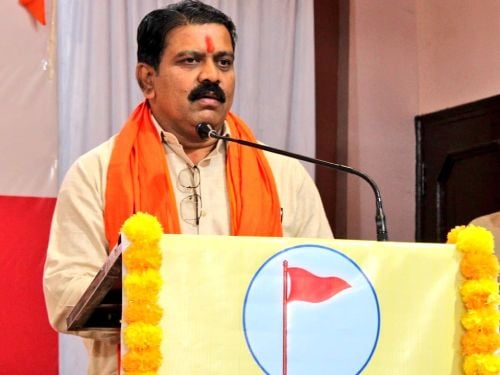 Chhattisgarh State Level Hindu Rashtra Adhiveshan’ held at Raipur
Chhattisgarh State Level Hindu Rashtra Adhiveshan’ held at Raipur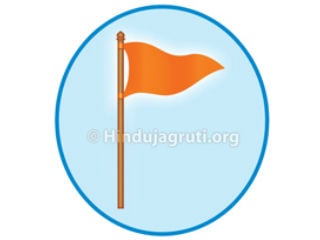 ‘District Level Hindu Rashtra Adhiveshan’ by the Hindu Janajagruti Samiti in Pune
‘District Level Hindu Rashtra Adhiveshan’ by the Hindu Janajagruti Samiti in Pune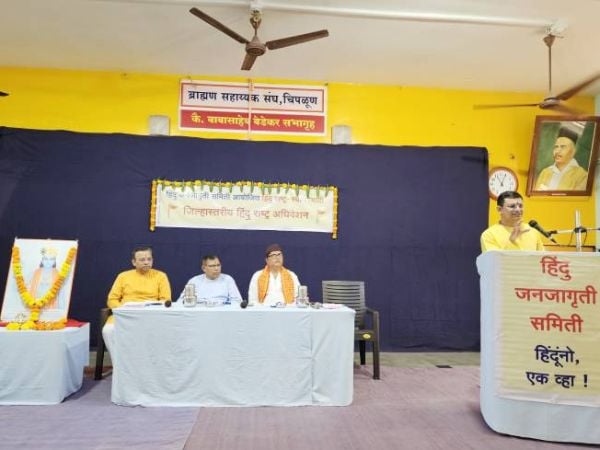 A one-day district-level Hindu-Rashtra Adhiveshan in Chiplun (Maharashtra)
A one-day district-level Hindu-Rashtra Adhiveshan in Chiplun (Maharashtra)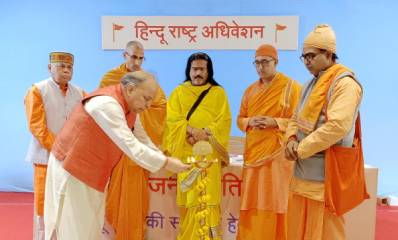 If we do not wake up for the Hindu Rashtra, we will have to live in an Islamic nation tomorrow! – Dr. Neel Madhav Das, Founder, Tarun Hindu
If we do not wake up for the Hindu Rashtra, we will have to live in an Islamic nation tomorrow! – Dr. Neel Madhav Das, Founder, Tarun Hindu Mizoram: EC accepts Christians’ demand to defer counting on Sunday, but what if Hindus had made a similar demand?
Mizoram: EC accepts Christians’ demand to defer counting on Sunday, but what if Hindus had made a similar demand?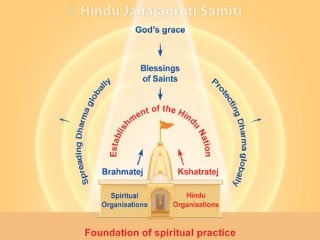 Support those who promise the welfare of Hindus in the upcoming Lok Sabha elections
Support those who promise the welfare of Hindus in the upcoming Lok Sabha elections